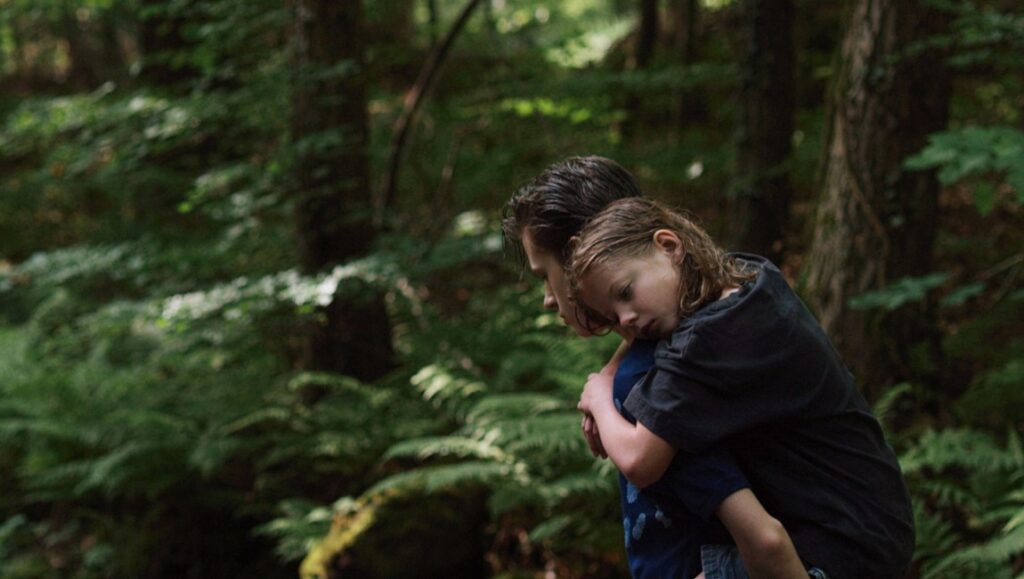I Was at Home, But… is an admirable but obnoxious examination of the nature of artifice.
At right around the halfway mark of writer-director Angela Schanelec’s latest film, I Was at Home, But…, recently widowed mother Astrid (Maren Eggert) goes off on a literal five-minute rant about how actors and actresses are nothing more than liars, and that the deception — especially in comparison to the reality that exists around her — makes her sick. This is a striking moment for a number of reasons. Until this point, Schanelec has communicated primarily through image alone, presenting a series of carefully composed static shots whose overall meaning, even when taken cumulatively, seems opaque at best: a donkey and a dog sharing a room in an abandoned countryside home; the purchase of a bicycle; a young boy returning home after a seemingly unexplained absence; a choreographed dance in a hospital room. While the mere presence of sustained dialogue is startling in and of itself, what proves especially surprising is the bluntness of the messaging. Why is Schanelec so artlessly dropping what basically amounts to her work’s thesis right into the middle of the film? This is, after all, an actress in a film discussing acting as subterfuge.
This gambit forces the viewer to reorient, and in reflecting on everything that came before this interlude, it becomes clear that Schanelec is commenting on both the contradictory nature of life itself and the duality of man, with the film as a whole serving as the ultimate example. The contradictions are endless, from a strong-willed and independent woman constantly seeking validation from every male she meets, to a couple experiencing relationship problems as one of its participants craves independence even while acknowledging feelings of love. Even its formalism, especially Schanelec’s reliance on extended long takes, serves to create a sense of realism while simultaneously highlighting the artifice of the proceedings. The problem is that once the viewer figures out what Schanelec is attempting to do, her work takes on the air not of art, but of academic exercise. This would be less of a problem if the filmmaking itself were stronger — while there is certainly artfulness on display, from a technical standpoint, there is nothing here that hasn’t been done before. Schanelec continues to hammers home her point all the way to film’s end, with an extended bit involving a dispassionate middle school production of Shakespeare’s Hamlet, and emphasizing what she could indeed learn from the Bard — enlightenment and entertainment are not mutually exclusive. I Was at Home, But… is instead admirable but obnoxious. If we want to consider that a contradiction, then I guess Schanelec has succeeded.
Published as part of February 2020’s Before We Vanish.


Comments are closed.